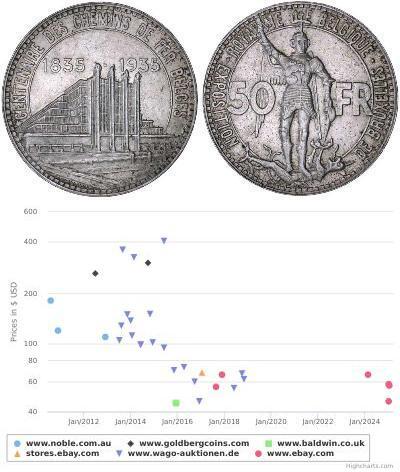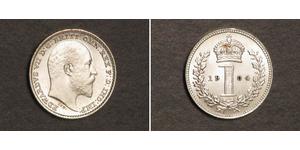1 Shilling Kingdom of England (927-1649,1660-1707) Silver Elizabe ...
ELIZABETH I, (1558-1603), second issue, 1560-1, silver shilling, mm martlett, bust 3C (S.2555).
11
coins in the group
| 1 | 2 |
|---|
(800 X 402 pixels, file size: ~123K)
Posted by: anonymous 2015-09-03
Elizabeth I (1558-1603), second issue, 1560-61, Shilling, 6.22g, m.m. martlet, crowned bust left, rev. shield over long cross fourchée (N.1985; S.2555), flan edge split at 8 o'clock, dark tone, good bust, very fine
(800 X 399 pixels, file size: ~131K)
Posted by: anonymous 2015-09-03
Elizabeth I, second issue, 1560-61, Shilling, 6.17g, m.m. martlet, crowned bust left, rev. shield over long cross fourchée (N.1985; S.2555), weak in places in legends, bust detail, good fine
(800 X 392 pixels, file size: ~138K)
Posted by: anonymous 2015-09-03
Elizabeth I, second issue, 1560-61, Shilling, 6.15g, m.m. martlet, crowned bust left, rev. shield over long cross fourchée (N.1985; S.2555), a little short of flan below bust, unusually good portrait, good very fine
(1005 X 500 pixels, file size: ~114K)
Posted by: anonymous 2015-02-20
ELIZABETH I, 1558-1603, second issue, 1560-1, silver shilling, mm cross crosslet, bust 3C (S.2555, N.1985). Toned very fine and rare.
(1005 X 517 pixels, file size: ~114K)
Posted by: anonymous 2015-02-20
ELIZABETH I, (1558-1603), second issue, 1560-1, silver shilling, mm martlett, bust 3C (S.2555). Toned, nearly very fine.
(1005 X 503 pixels, file size: ~113K)
Posted by: anonymous 2015-02-20
ELIZABETH I, (1558-1603), second issue, 1560-1, silver shilling, mm cross crosslet (S.2555) bust 1A. Toned, very fine.
Articles
|
You may be interested in following coins
2025-05-24
- Historical Coin Prices
2025-06-14
- New coin is added to 1 Penny United Kingdom Silver Edward VII (1841-1910)
1 Penny United Kingdom Silver Edward VII (1841-1910)
group has 5 coins / 5 prices
⇑
GREAT BRITAIN 1904 1 Penny Maundy Silver P/L UNC
You may be interested in ...

-500-250-rlAKbzbiDt4AAAFLPozk0Kjq.jpg)
-300-150-emYKbzbiMIwAAAFPJZ6A8JE1.jpg)
-300-150-25UKbzbisOkAAAFPmkaA8JFl.jpg)
-300-150-w6UKbzbizhcAAAFPJcuA8JFk.jpg)
-300-150-ZtkKbzbiPgYAAAFLJ0Xk0KkV.jpg)
-300-150-rlAKbzbiDt4AAAFLPozk0Kjq.jpg)
-300-150-M14KbzbisJsAAAFLsPHk0Kli.jpg)














